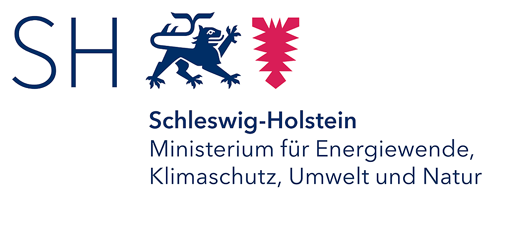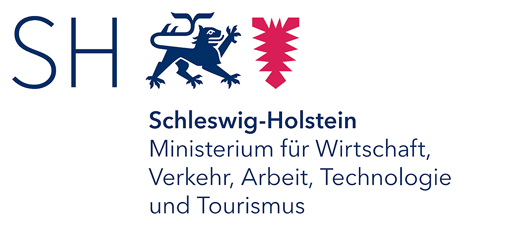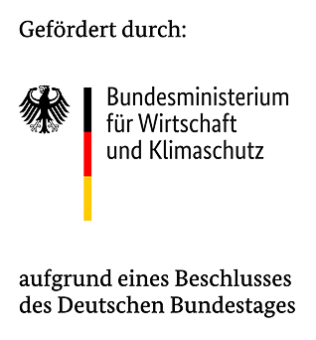FAQ - Frequently Asked Questions
The catenary technology
The rail infrastructure has already reached the limits of its capacity. Path conflicts between freight, long-distance and local traffic, especially in the nodes, are the rule. Despite all efforts to shift more freight traffic to rail and waterways, the highest land-based transport volume is therefore provided by road freight transport, both today and in the foreseeable future, with a share of over 70 percent. The main reason for this is that trucks can deliver goods quickly and flexibly – this is of great importance for many logistics sectors.
As part of the Climate Protection Plan 2050 and the Climate Protection Program 2030, the German government has adopted extensive measures to further increase the share of rail in freight transport. However, expert reports commissioned by the Federal Environment Agency show that even with the greatest efforts, rail’s share cannot be increased from 18 percent today to more than just under 25 percent by 2030. Because of the overall increase in traffic, this already means a multiplication of rail traffic. However, this alone will not be enough to sufficiently reduce emissions in freight transport. Therefore, the trolley truck can be a useful complement to rail.
Increasing freight traffic is a consequence of our economic system (export nation, relatively high share of industry in value creation, division of labor, etc.) and our lifestyle (desire for large product selection, increasing orders on the Internet, etc.). If freight traffic is to be significantly reduced, both extensive social and economic changes would have to take effect in the long term. Whether these would be fast enough and sufficient is questionable.
No. Overall, the federal government is promoting a broad mix of different approaches. In order to achieve decarbonization in all sectors (electricity, heat, mobility), efficient conversion steps must be promoted preferentially. This is because renewable energies (RE) also require resources and land. In the transport sector, direct use of electric power has a significantly higher efficiency compared to fuel cell concepts.
For electricity-based liquid fuels (“power-to-liquid” or “e-fuels” as they are called), there are additional conversion losses. Biomass- or RES-E-based fuels should therefore only be used in the long term for transport modes where electrification is unrealistic in the foreseeable future (especially air and sea transport).
Other benefits of freight electrification include mitigation of local air pollutants and reduction of traffic noise. Catenary technology can also be combined with other technologies because it ultimately acts like a “fast charging system without having to stop.” Combined (hybrid) drive systems or fuel cell trucks could also benefit.
Hydrogen, produced through the use of renewable energy, also represents a low-carbon propulsion energy that can be used in heavy freight transport. Compared to the use of hydrogen, overhead electric propulsion has the advantage that the renewably generated electricity can be used directly. There are no conversion losses. For the freight transport sector, a mix of different drives can be assumed in the future. Hybrid solutions are also expected to be used on a large scale. The choice of energy source or drive system will depend on the respective application profile and area of use of a truck and will have to take into account the economic and transport logistics conditions. The trolley truck is one possible variant.
Since the climatic conditions in Schleswig-Holstein are relatively mild, more heavily iced pipelines are not expected. Nevertheless, electrical de-icing of the crawler tracks is planned. There were no problems on the Swedish test track despite heavy snowfall and low temperatures.
The overhead line system allows direct use of electrical energy, thus avoiding conversion losses. The electrical energy is almost completely converted into kinetic energy. In addition, electricity can be recovered from braking processes, e.g. can be made available to other OH trucks. The exact efficiency of the system will be determined during the field test.
In the transport sector, the direct use of electric power has by far the highest efficiency compared to fuel cell concepts. At the same time, electricity can be produced in a more environmentally friendly way through the expansion of renewable energies. In the concept of overhead contact line technology, both components can be combined and thus contribute to more climate-friendly heavy-load traffic.
Only research into overhead contact line technology makes it possible to draw conclusions about whether the technology is suitable for permanent or long-term use. Accompanying scientific research provides the data on the basis of which decisions can be made regarding further political priorities and investments in further technological developments, research or construction projects. The knowledge gained in this way is also used for other areas, such as methods for overall balancing, for the further development of rail systems, for studies on environmental awareness or cost calculation for freight forwarders.
Field test eHighway
The project “Field trial eHighway on the BAB A1 in Schleswig-Holstein (FESH)” is a model trial for practical testing of the infrastructure with overhead hybrid trucks (OH trucks) as a possible technology for climate-neutral road freight transport. In addition to the planning, construction and operation of a test line in Schleswig-Holstein, the project also includes accompanying scientific research to evaluate the overhead contact line system according to scientific criteria and under real conditions, both technically and economically and ecologically. The project is being carried out by the Forschungs- und Entwicklungszentrum Fachhochschule Kiel GmbH (R&D Center) and is jointly managed by the Ministry for Energy Transition, Climate Protection, Environment and Nature of the State of Schleswig-Holstein (MEKUN) and the Ministry for Economics, Transport, Labor, Technology and Tourism of the State of Schleswig-Holstein (MWVATT).
The climate policy targets, which envisageCO2 neutrality by 2050 at the latest, pose a particular challenge for freight transport. Freight traffic has grown significantly in recent decades and, according to the Federal Ministry of Transport’s traffic forecast, will increase by 38 percent overall by 2030 compared with 2010. Therefore, climate-friendly and practical solutions must be found promptly, which cannot and will not only lie in the avoidance and relocation of transports.
For these reasons, the German government decided back in 2014 with the “Climate Protection 2020” action program to carry out field trials with trolleybuses. The state of Schleswig-Holstein, together with the Research and Development Center at Kiel University of Applied Sciences, is implementing one of a total of three field trials nationwide.
The field trial is funded under the “Renewably Mobile” program of the German Federal Ministry of Economics and Climate Protection (BMWK), formerly the German Federal Ministry for the Environment, Nature Conservation and Nuclear Safety (BMU). Planning and construction of the research facility were funded with a volume of around 19 million euros. Around 7 million euros in funding is available for the operation and research of the eHighway Schleswig-Holstein.
Due to the traffic volume of about 60,000 cars and 8,000 trucks per day, the selected section of the A1 highway is particularly suitable for testing the system under real traffic conditions. The lively use of the section by the Bode forwarding company in Reinfeld on the A1 was another important argument. In addition, a ground-up rehabilitation of the section was completed in 2012, so no major rehabilitation work is expected in the foreseeable future and the operational phase of the project will not be disrupted.
The current funding phase of the field trial began in 2019 and is expected to conclude in December 2024. The future of the overhead contact line system on BAB 1 depends on the findings of the three field trials (conducted in Schleswig-Holstein, Baden-Württemberg and Hesse) and political decisions regarding potential longer-term use. If the field tests are positive, the eHighway route could also be expanded.
The future use of the overhead contact line systems depends on the findings of the field tests in the three states and on political decisions. Initially, experience will be gained in field trials in Schleswig-Holstein, Hesse and Baden-Württemberg. The projects are accompanied scientifically for this purpose. Possible expansion scenarios and financing or operator models are being researched in parallel.
This is how the overhead contact line technology works
No, for OH trucks, only individual sections of the busiest highways would need to be equipped with overhead wires to already be able to handle a large portion of truck mileage with electric drive. Results from the accompanying research show that 3,000 to 4,000 km in the total highway network of approx. 13,000 km would be sufficient for this. The three field trials will also use trucks that have an additional battery so that they can drive further distances electrically after recharging at the depot or under overhead line sections, e.g., in order to be able to deliver freight emission-free outside the highway.
Unlike the overhead contact line system of Deutsche Bahn, the eHighway requires two contact wires to form a closed circuit. The railroad is operated with AC voltage of 15,000 volts, while the eHighway is operated in the range of 670 volts DC.
Speeds of up to 100 km/h could be realized on the overhead line. However, OH truck drivers are bound by the same rules as conventional trucks, i.e. the maximum permitted speed is 80 km/h.
The number of OH trucks that can use the overhead line simultaneously depends on several factors, including the power of the grid connection, the design of the substations, and the electrical resistance of the overhead line.
Retrofitting trucks is costly, but technically possible. In addition to the integration of the pantograph, the conversion option is largely dependent on the drive concept.
The FESH project uses trolley trucks equipped with a hybrid drive system consisting of an electric motor and a diesel engine. The test vehicles used can use the electrical energy directly for their traction and charge the battery storage units integrated in the vehicles while driving under the overhead lines. This can shorten the idle and charging times of electric trucks. Other hybrid concepts, such as the with gas and hydrogen drives, are also possible with the overhead contact line system.
In principle, the contact wire is routed parallel to the top edge of the carriageway at a height of 5.10 m. If a structure has to be crossed underneath, the entire catenary can be lowered to a height of 4.50 m and is guided in fixed overhead conductor rails at these points.
Safety aspects of overhead contact line technology
We see with train traffic, which puts a much higher load on overhead lines than OH trucks, that line cracks are very rare there. As a rule, line cracks are caused by external impacts, e.g. by falling trees. These are not expected on the test track. Nevertheless, measures are taken to be able to react quickly in the event of an overhead line break. Appropriate precautions have been taken to exclude any risk to road users and rescue and assistance operations.
The poles pose a danger than vehicles could collide with them. To prevent this as far as possible, new crash barriers of the highest protection class were installed.
No, the expected emissions from the line are far below the permissible limits and guideline values. They fall e.g. also lower compared to streetcars.
The masts naturally alter the view of the area surrounding the highway. The poles are spaced 50 meters apart and are similar to what we already know about mounting for cross-lane traffic signs.



